- Quick Read
- Deep Read ( 6 Min. )

Why is Christian Science in our name?
Our name is about honesty. The Monitor is owned by The Christian Science Church, and we’ve always been transparent about that.
The Church publishes the Monitor because it sees good journalism as vital to progress in the world. Since 1908, we’ve aimed “to injure no man, but to bless all mankind,” as our founder, Mary Baker Eddy, put it.
Here, you’ll find award-winning journalism not driven by commercial influences – a news organization that takes seriously its mission to uplift the world by seeking solutions and finding reasons for credible hope.
Explore values journalism About usMonitor Daily Podcast
- Follow us:
- Apple Podcasts
- Spotify
- RSS Feed
- Download
TODAY’S INTRO
A daughter, a dad, and a book for each day
Welcome to the Monitor Daily. Today we’re covering the normalization of harsh political rhetoric, the cool calm of New Orleans amid Hurricane Barry, Canada’s indigenous reconciliation efforts, farmers and mental health, and a Chicago photographer who bridges racial divides.
But first: Children often bring out the storyteller in adults. But when Matt Zurbo met his new daughter, Cielo, that phenomenon rose to new heights: He decided to write 365 books in 365 days for her. And to share them with us. For free. On top of his day job as an oyster farmer.
Mr. Zurbo, who is on Day 336, is not your typical writer of children’s books. Although he has published nine, he notes on his website that he has “spent most of his life working in hard jobs in remote bush throughout Australia.” But Cielo’s arrival prompted him to ponder the world she would grow up in – and create a tribute to the power of imagination. “Imagination trumps violence,” he writes. “Through imagination we build a better planet. I hope this ode, done out of love, brings you joy!”
Read “The World’s Smallest Sound” or “The Kid Ghosts Were Scared Of” or “Monster Pants” (and Mr. Zurbo’s ideas for illustrating them), and your childhood and adult selves will likely succumb in short order to Mr. Zurbo’s magical sense of humor and wonder. Be careful: That may soften some edges, break down some barriers, and even expand some outlooks – reminding us of how the world can look if we try to see it through the eyes of a child.
Share this article
Link copied.

Help fund Monitor journalism for $11/ month
Already a subscriber? Login

Monitor journalism changes lives because we open that too-small box that most people think they live in. We believe news can and should expand a sense of identity and possibility beyond narrow conventional expectations.
Our work isn't possible without your support.
How President Trump became the GOP’s ‘new normal’
That President Trump has changed political discourse is beyond doubt. But that’s not to say his provocative style will be the way of the future.

In the past, mainstream Republicans have often taken a two-pronged approach toward President Donald Trump: applaud him on policy, but clap back on the ugly rhetoric. On Sunday morning, however, the president went on a Twitter tirade against a group of Democratic congresswomen of color – calling on them to “go back” to their countries of origin, though all but one are American-born. By Monday afternoon, only a handful of Republicans in Congress had contradicted him.
The limited negative response from elected Republicans may be the biggest proof yet that, after 2 ½ years in office, Mr. Trump has thoroughly taken over the GOP and normalized rhetoric that would once have been unthinkable in modern political discourse.
To the opposition, there’s nothing “normal” about a president who traffics in racist rhetoric, separates migrant children from their families, and calls the press “the enemy of the people.”
To Trump fans, the strong economy, crackdown on illegal immigration, and revamping of international trade are all happy outcomes of an outsider president willing to take on the forces of business as usual.
“People just get used to Trump being Trump,” says Geoffrey Nunberg, a linguist at the University of California, Berkeley School of Information.
How President Trump became the GOP’s ‘new normal’

On Election Day 2016, Ari Fleischer was so unhappy with the choices for president he left his ballot blank.
It pained him to do so. Mr. Fleischer is a staunch Republican; he had served as President George W. Bush’s press secretary. But, he says in an interview, GOP nominee Donald Trump had gone too far, starting with the so-called Muslim ban.
Now, Mr. Fleischer says, if the election were held today he’d vote for President Trump. His change of heart is “policy-driven,” he says, pointing to tax reform, deregulation, and even Mr. Trump’s use of tariffs as a tool to change China’s behavior, a profound shift in the Republican approach to trade.
Not that Mr. Trump gets a blank check. “Everybody still needs to speak up when the president rhetorically goes too far,” Mr. Fleischer says.
A test of this approach – applaud Mr. Trump on policy, clap back on ugly rhetoric – hit Republicans on Sunday morning. The president went on a Twitter tirade against a group of Democratic congresswomen of color – calling on them to “go back” to their countries of origin, though all but one are American-born. By Monday afternoon, only about a dozen Republicans in Congress had contradicted him.
One of Mr. Trump’s closest allies on Capitol Hill, Republican Sen. Lindsey Graham of South Carolina, doubled down on the president’s point.
“We all know that AOC and this crowd are a bunch of communists. ... They’re anti-Semitic. They’re anti-America,” Senator Graham said on Fox News, referring to Rep. Alexandria Ocasio-Cortez, D-N.Y., who was born in New York.
Mr. Trump then reinforced Mr. Graham’s commentary by tweeting it out.
For his part, Mr. Fleischer tweeted Monday that Mr. Trump’s statement was “completely inappropriate.” But he says the incident doesn’t change his support for the president.
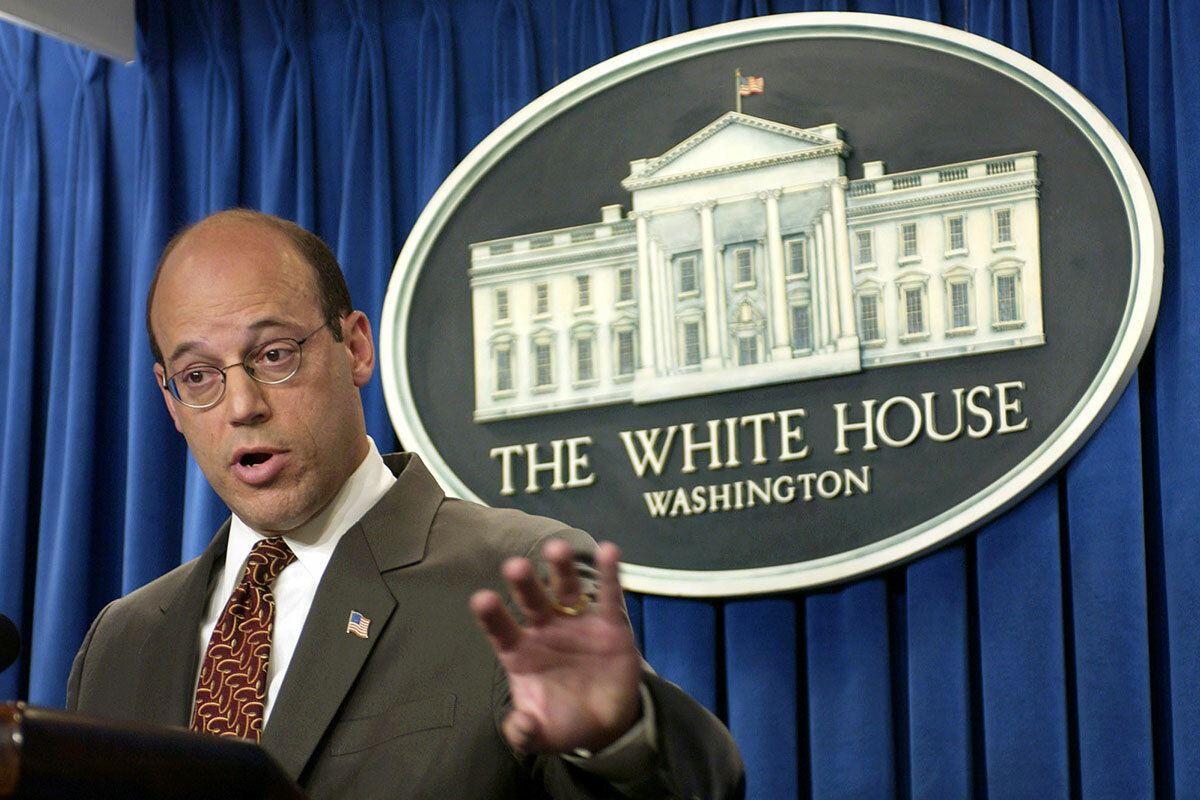
Indeed, Mr. Trump’s incendiary tweet and the limited negative response from elected Republicans may be the biggest proof yet that, after 2 ½ years in office, Mr. Trump has thoroughly taken over the Republican Party and normalized rhetoric that would once have been unthinkable in modern political discourse.
Democrats, from House Speaker Nancy Pelosi on down, have blasted Mr. Trump. The president’s plan has “always been about making America white again,” Speaker Pelosi tweeted. “THIS is what racism looks like,” tweeted Rep. Ayanna Pressley of Massachusetts, who is African American and one of the members targeted by Mr. Trump. Speaker Pelosi announced Monday there will be a House resolution condemning the president’s tweets.
At a White House event Monday afternoon, Mr. Trump accused Ms. Pelosi of being racist when she tweeted that he wants to “make America white again.” He also said “it doesn’t concern me” that many people saw the tweets as racist “because many people agree with me.”
On Capitol Hill, negative Republican reactions began trickling in Monday afternoon. The two African American GOP members – Rep. Will Hurd of Texas and Sen. Tim Scott of South Carolina – registered their objections. Most of the other Republicans who pushed back on Mr. Trump have been known to criticize him before, including Sen. Susan Collins of Maine. She said she disagrees “strongly” with House progressives on policy but called Mr. Trump’s tweet “way over the line.”
GOP support for Trump’s tweets also kept coming in, including a tweet from Sen. Steve Daines, R-MT, who concluded, “I stand with @realDonaldTrump.” In a podcast on a Baltimore radio station, Rep. Andy Harris, R-Md., defended Trump’s tweets as “clearly” not racist.
Even before the Sunday tweetstorm, Mr. Trump’s ownership of the GOP was clear. He faces no serious challenge for his party’s presidential nomination in 2020, and the ranks of Republican “never Trumpers” have thinned. Among rank-and-file voters overall, approval for Mr. Trump is near an all-time high, though still below 50%.
In the “new normal” of the Trump presidency, the unusual has become the usual. To Trump fans, the strong economy, crackdown on illegal immigration, and revamping of international trade are all happy outcomes of an outsider president willing to take on the forces of business as usual.
“What he’s doing is amazing for our country, and that should be normal,” says Buckaroo Lennox, an author and musician in Eureka Springs, Arkansas, who supports the president.
To the opposition, there’s nothing “normal” about a president who traffics in racist rhetoric, separates migrant children from their families, and calls the press “the enemy of the people.”
Leah Greenberg, co-founder of the anti-Trump Indivisible movement, blames both major parties for the current state of affairs.
“The political system is making choices every day about how much of this we accept,” Ms. Greenberg says. “It’s true of the Republicans who’ve lined up behind Trump – and it’s true of Democrats who have chosen not to move aggressively toward impeachment.”
Defining “normal”
The word “normal” is deceptively simple. It can refer to a statistical norm in scientifically measurable phenomena, such as weather, and it can also be deployed in the highly subjective world of politics. The philosopher Ian Hacking once called the use of the word “one of the most powerful ideological tools of the 20th century.”
During the 2016 campaign, critics warned against “normalizing” Mr. Trump. Late-night host Jimmy Fallon took grief for tousling the candidate’s hair during an appearance on his show, a moment that Mr. Trump seemed to enjoy.
After the election, calls to resist normalizing the Trump presidency rang loudly. “Not my president,” protesters shouted, refusing on principle to utter the words “President” and “Trump” in succession.
After all, the argument still goes, Mr. Trump didn’t win the popular vote. And it’s possible, some say, that Russian meddling swung the 2016 election his way. No less a figure than former President Jimmy Carter recently asserted that as fact, though without evidence.
There’s nothing new in trying to delegitimize a sitting president. Look no further than the “birther” movement – fueled by Mr. Trump himself – that sought to cast doubt on President Barack Obama’s American citizenship.
But Mr. Trump may well be the first president to inspire demands that the media not normalize his behavior and thus the very legitimacy of his presidency.
Mr. Trump’s habit of making false statements – whether he is misspeaking, dissembling, exaggerating in a way typical for politicians and salesmen, or lying outright – has employed legions of fact-checkers, and challenged newsrooms to examine exactly how to describe utterances that aren’t true.
But the press can’t win.
“People complain that the media are normalizing Trump simply by virtue of covering him all the time,” says Geoffrey Nunberg, a linguist who teaches at the University of California, Berkeley School of Information. “Everything he does becomes a story. People just get used to Trump being Trump, and there’s no way around it.”
The daily barrage of news about the president and his administration may have led, in some ways, to a sense of “indignation fatigue” among critics that at times can appear to be capitulation.
“Obviously there are still people fighting what they consider to be the good fight,” says Barbara Perry, a presidential historian at the University of Virginia in Charlottesville. “But that level of white-heat intensity just can’t be sustained, day in and day out, minute after minute. Though that doesn’t mean it’s gone away in people’s minds or that it doesn’t flare up again.”
Impact on the presidency
The 2020 presidential race is still taking shape. Democrats are in the early rounds of figuring out who their nominee will be. Once the nominee is clear, the battle will be joined and the energy that went into the 2018 midterms and into a variety of causes – from climate change and guns to abortion and women’s rights – will channel into a presidential cycle that could be the most explosive in generations.
That Mr. Trump has changed politics and the presidency is beyond doubt. His use of Twitter to communicate directly to the public is an innovation from which there is no pulling back. But that’s not to say Mr. Trump’s provocative style will be the way of the future.
“It is difficult to imagine a successor with either the will, stomach, flair, or necessity for doing what he does or how he does it,” writes presidential historian David Pietrusza in an email. “Presidential candidates may for the time being follow in his tweet-steps but I doubt if any subsequent White House occupant would.”
In the past, outsize presidential personalities have often been followed by more conventional figures: Martin Van Buren succeeded Andrew Jackson, the first populist president, whose portrait hangs in the Trump Oval Office. William Howard Taft followed Teddy Roosevelt. Warren Harding followed Woodrow Wilson.
“As low hemlines follow high hemlines,” Mr. Pietrusza writes, “it would not surprise me if his 2020 or 2024 successor might comport him or herself in vastly more subdued ways.”

A letter from
After Barry, the Big Easy breathes easy
New Orleans stayed steady amid Hurricane Barry. One reason? The city has invested in building trust through improved infrastructure and far better communication.

- Quick Read
- Deep Read ( 4 Min. )
While national weather forecasters issued dire forecasts ahead of the storm, survivors of Hurricane Katrina like Lester Tobias tamped down panic. “I admit, sometimes I would get up and turn the TV off because I could feel the fear building,” he says “I just told myself: Chill.”
Some, like Charlene from Baton Rouge, railed against the “fake news mafia” that stirred up panic. But overall, a sense of thankfulness reigned. “We love this city, and we’ll fight for it,” says Claire Dahm. As part of that pride, many residents have become amateur “stormologists,” intently studying pump capacities, shear gradients, and levee topography.
The confidence born of personal experience fueled a leveled response. Images of Lt. Gov. Billy Nungesser striding a levee in white shrimp boots summed up the local mindset.
As a result, officials issued largely voluntary evacuation orders. A push to open the Morganza Spillway was rejected. If panic had ruled, the state’s agriculture interests would have been flooded.
Instead, authorities “have been competent and communicative, providing just enough warning without being alarmist,” says Tulane Prof. Richard Campanella. “Likewise, the populace has been calm, cool, and collected.”
After Barry, the Big Easy breathes easy

As Tropical Storm Barry crept closer to the Louisiana bayous, Lester Tobias, a French Quarter cook, steeled his nerves.
Fourteen years earlier, he stood on the Mississippi River levee and heard it break with a loud boom. Mr. Tobias fled as hundreds died in the flood waters of Hurricane Katrina.
For years, when he would hear rain in the night, he would get out of bed and stand at the window. “My wife would say, ‘What you jumping up for?’ I’d say, ‘I’m seeing if the water is going to rise.’”
While national weather forecasters issued dire forecasts this weekend, New Orleanians like Mr. Tobias tamped down the panic. “I admit, sometimes I would get up and turn the TV off because I could feel the fear building. I just told myself: Chill.”
Some, like Charlene from Baton Rouge, railed against the “fake news mafia” that stirred up panic while the ground barely got wet. But overall, a sense of thankfulness reigned among a legion of storm-riders. “We love this city, and we’ll fight for it,” says Claire Dahm, who flew back to the city from Seattle to confront the hurricane. As part of that pride, many residents have become amateur “stormologists,” intently studying pump capacities, shear gradients, and levee topography.
The confidence of personal experience fueled a leveled response that contrasted starkly with national news coverage and anxiety among far-flung family and friends. Images of Lt. Gov. Billy Nungesser striding a levee in white shrimp boots summed up the local mindset in this city “floating below the surface of the water on a bed of mud,” as Benjamin Latrobe, America’s first architect, called it in 1819.
Richard Campanella, an expert on New Orleans' long flood-fighting tradition, referenced an article on the resiliency of civilians in New Orleans he wrote for Places Journal: “What the Nation’s Best-Educated Amateur Planners Learned from Hurricane Isaac. And Gustav. And Rita and Katrina. And Cindy, Ivan, Lili, Isidore, and Georges.”
As a result, he says, officials issued largely voluntary evacuation orders. A push to open the Morganza Spillway to relieve the Mississippi River was rejected – keeping the state’s agriculture interests from being flooded.
Instead, authorities “have been competent and communicative, providing just enough warning without being alarmist,” says Professor Campanella, author of “Bienville’s Dilemma” and a geography professor at Tulane University. “Likewise, the populace has been calm, cool, and collected.”
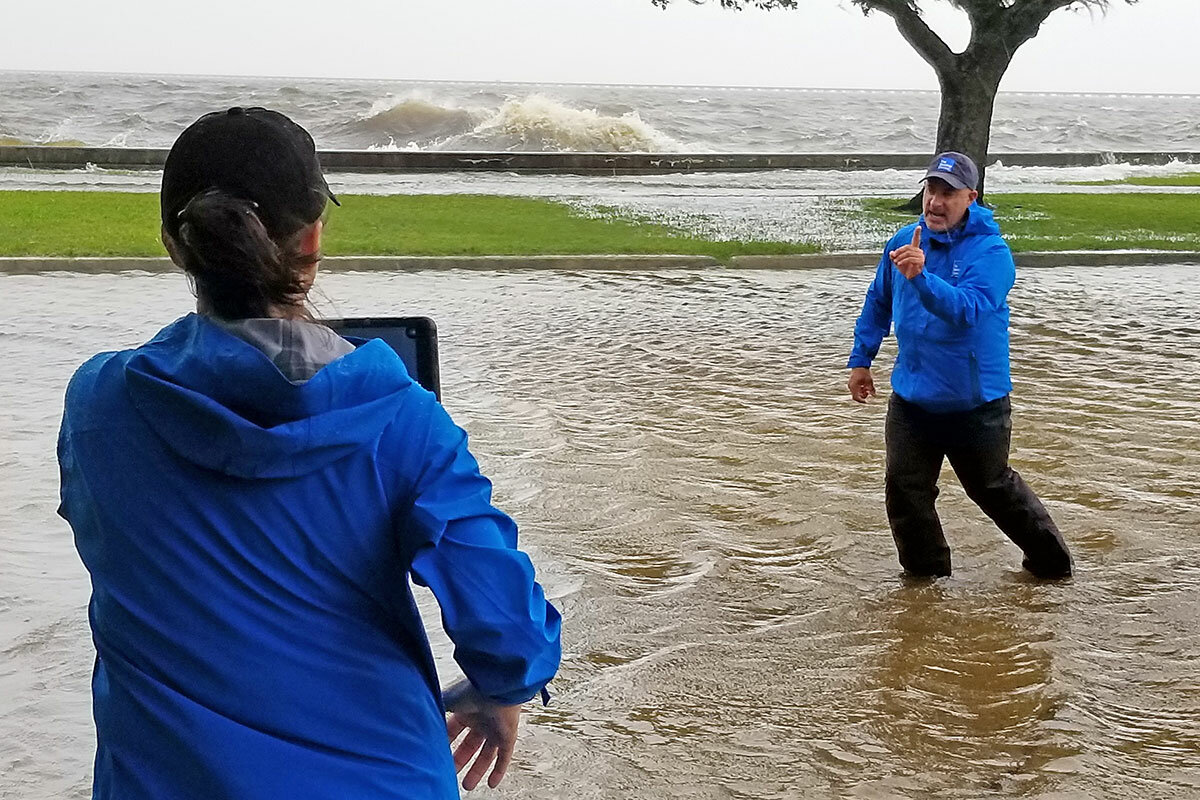
The Weather Channel’s Jim Cantore attempted to add some drama Sunday morning by standing in a puddle as lake waves crashed behind him in Mandeville, Louisiana. Off-camera, he admitted, “It’s over! Now it’s just ring around the rain bands.”
The city’s Twitter feed reprimanded one national newspaper for a breathless story on local anxiety that pictured not residents fleeing as the headline suggested, but two tourists lugging suitcases past Brennan’s Restaurant.
“Humans have a bit of morbidity in them: They want to see death and destruction,” a retired disc jockey explained during a call-in to a local radio station.
Faraway moms and dads can be forgiven for expecting the worst.
Barry was no joke. Yes, rainfall totals were way off – more like 2 inches than 20, as unexpectedly dry air sopped up the rain. But more than 100,000 people lost power, and a dozen had to be rescued from a remote island.
And as Bywater merchant Chet Gretna points out, the city was already on edge. A renegade thunderstorm drenched the city on Wednesday, leaving some folks swimming through the Irish Channel, which is a famed New Orleans neighborhood, not a waterway.
“A lot of people did get nervous about a storm on top of a storm,” says Mr. Gretna, a veteran hurricane rider.
New Orleanians are quick to point out that Katrina was no natural nightmare. It was a manmade disaster, with stumbles at every level. The greatest treachery was the failure of the levees themselves, the blame placed squarely on the Army Corps of Engineers, the federal agency that builds and maintains most of an elaborate levee system that fortifies the city.
But the trust has been built back, says Richard Jeffries, a retired meteorologist who attended insider briefings during Katrina, in part because of massive investment in the levee system and also better communication and increased transparency. During Katrina, he remembers officials would spend 40 minutes figuring out how to address rampant rumors that hobbled the response. This time, local researchers and journalists kept the government honest, at one point reporting on inconsistencies in levee height data, which the Corps investigated and corrected.
Ms. Dahm credits local authorities for holding detailed briefings that veered at key points into Spanish and Vietnamese to benefit the city’s two largest immigrant groups. “I felt like I was getting the best, most current information,” she says.
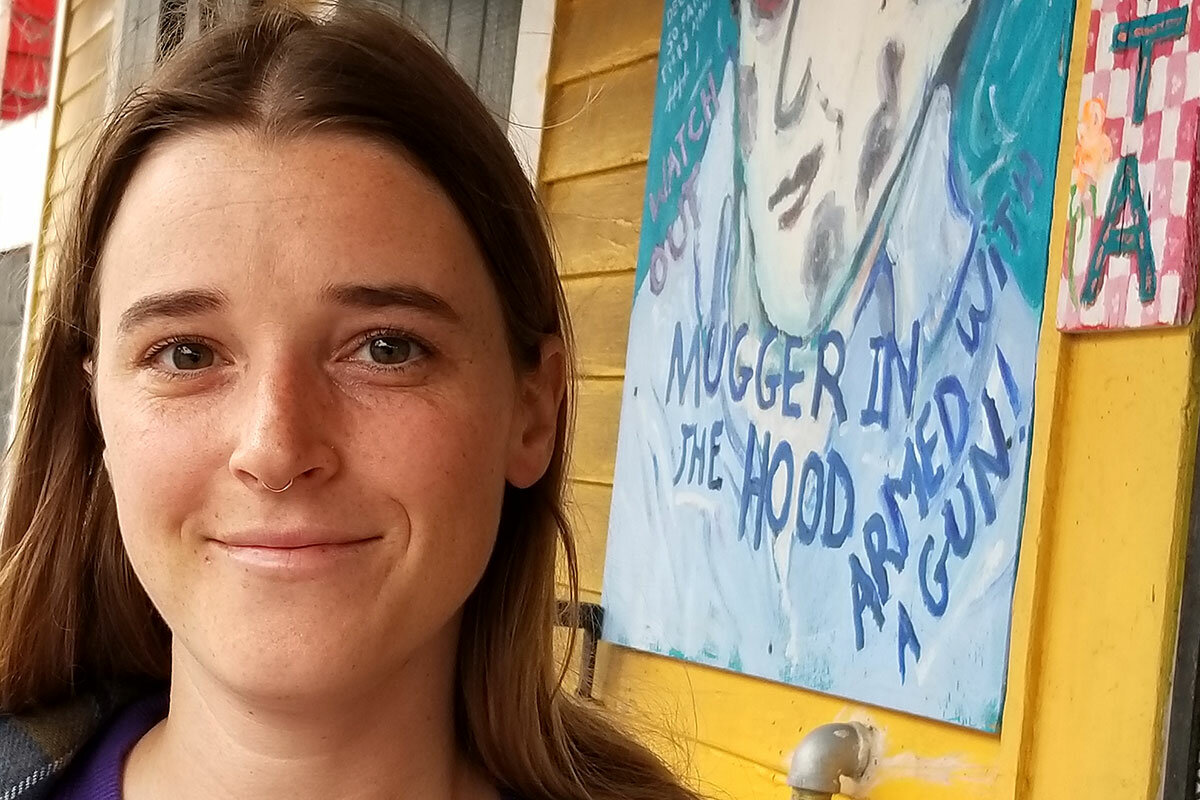
Sunday night, anxiety gave way to what this town does best: celebration.
At NOLA Comedy Night at the Hi-Ho Lounge, one of the comedians riffed, “In the end, we got what we wanted out of Barry: peace, happiness, and a gentle breeze.”

A deeper look
Tired of waiting for Canada, native peoples reclaim their culture
While Canada’s indigenous peoples agree the country has a long way to go in addressing a legacy of colonial abuse, they are making strides in restoring a cultural identity that was long repressed.

- Quick Read
- Deep Read ( 9 Min. )
Reconciliation – the coming to terms with Canada’s legacy of colonial abuse of indigenous peoples – has been at the top of the political and cultural agenda since Prime Minister Justin Trudeau took office. Yet as his term comes to a close, many indigenous communities wonder if heady rhetoric has amounted to much more than a buzzword. Two-thirds of indigenous peoples don’t feel respected by the Canadian government, according to a poll published early this month.
Casting a long shadow over the principle of reconciliation was the ouster of Jody Wilson-Raybould. She rose to power in this province and, under Mr. Trudeau, became the first justice minister of indigenous ancestry but was kicked out from his Liberal Party this spring. If her appointment stood as a symbol of what reconciliation should look like, her downfall has caused a rethink about what reconciliation has really accomplished beyond symbolism.
“It’s been lots of meetings, lots of photo-ops, lots of indigenous motifs, lots of process,” says Hayden King, director of the Yellowhead Institute, an indigenous-led think tank that opened a year ago at Ryerson University in Toronto. “And now even that is starting to fall apart.”
Tired of waiting for Canada, native peoples reclaim their culture
When carver Tim Paul searched for a cedar tree to build a totem pole honoring the preservation of Canada’s indigenous languages, he and his team chose a 75-foot windfall in the forests of Vancouver Island that was rotted throughout.
On a recent day along the harbor of Port Alberni, the group mills the 800-year-old trunk before it can stand strong and sustainably – a metaphor for the state of indigenous culture. “We’re doing this to save what we have left,” says Mr. Paul, who sprinkles sentences with Nuu-chah-nulth words but does not speak his native language fluently, due to being forced into state-regulated boarding school at age 6.
Commissioned by the First Nations Education Foundation to celebrate the United Nations’ 2019 Year of Indigenous Languages, the pole will be erected at the University of Victoria this fall. It will mark a public space intended to generate conversation about how indigenous language was silenced by residential schooling, says Scott Jeary, executive director of the First Nations Education Foundation in British Columbia. “It’s a recognition of what [Canada’s] real history is.”
Mr. Paul, whose work has been shown around the world, is decorating the pole with what he describes as the relatives of his people: the sky, sun, moon, mountains, rivers, lakes, land, sea, wind, and stars. He will also depict an earthquake to teach human humility, he explains.
This is one of countless efforts and initiatives underway – and one of a flurry in Port Alberni alone – intended to advance “reconciliation” in Canada: the coming to terms with Canada’s legacy of colonial abuse.
Indigenous rights have remained at the top of the political and cultural agenda since Prime Minister Justin Trudeau took office, the same year the Truth and Reconciliation Commission released findings on abuses rife in the residential schooling system and their intergenerational consequences.
Mr. Trudeau is not the first Canadian leader to promise a reset on Canada’s relationship with indigenous peoples, but he raised expectations for the three different indigenous groups in Canada: First Nations, Metis, and Inuit. “No relationship is more important to Canada than the relationship with indigenous people,” Mr. Trudeau said in 2017.
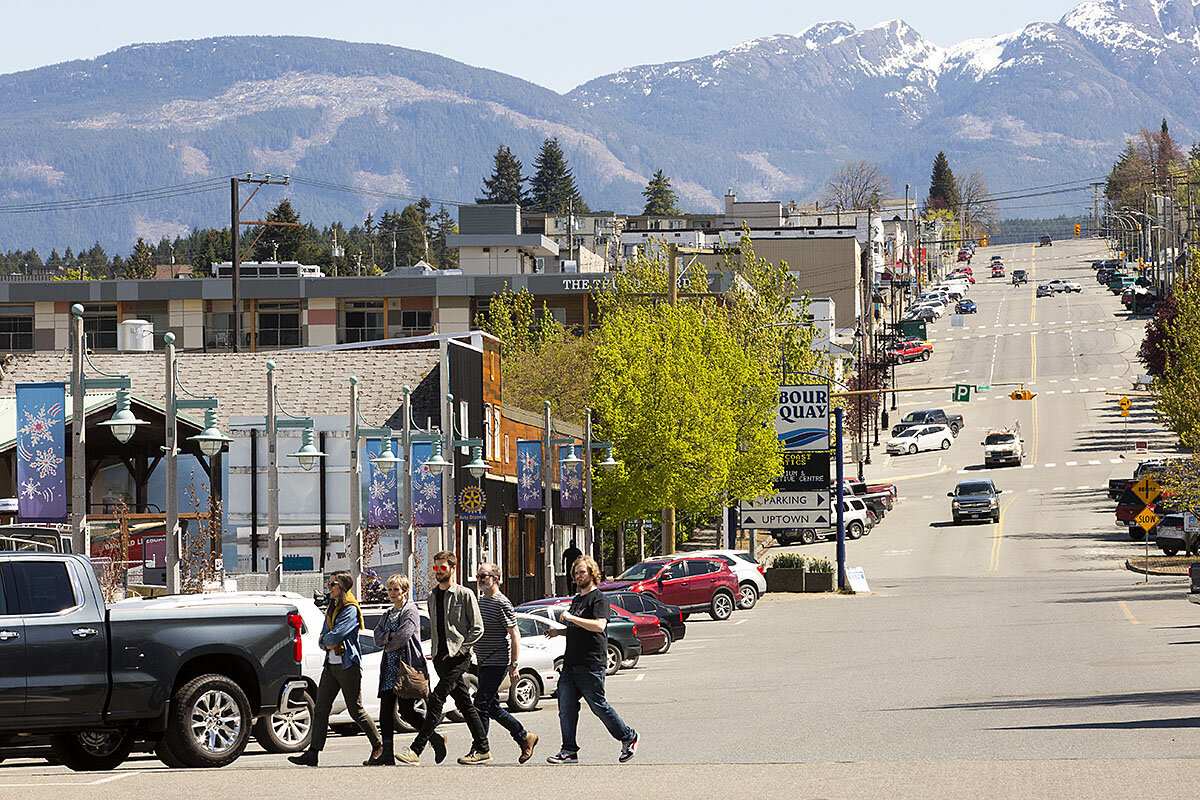
Yet as his term comes to a close, many indigenous communities wonder if heady rhetoric has amounted to much more than a buzzword. Two-thirds of indigenous peoples don’t feel respected by the Canadian government, according to a poll commissioned by the CBC and published early this month. For Mr. Paul, the most important advances have come from indigenous reclamation of culture, not anything the government has promised or delivered.
Casting a long shadow over the principle of reconciliation – especially here in British Columbia – was the ouster of Jody Wilson-Raybould. She rose to power in this province and, under Mr. Trudeau, became the first justice minister of indigenous ancestry but was kicked out from his Liberal Party this spring. If her appointment stood as a symbol of what reconciliation should look like, her downfall has caused a rethink about what reconciliation has really accomplished beyond symbolism.
“It’s been lots of meetings, lots of photo-ops, lots of indigenous motifs, lots of process,” says Hayden King, director of the Yellowhead Institute, an indigenous-led think tank that opened a year ago at Ryerson University in Toronto. “And now even that is starting to fall apart.”
A dark history for indigenous peoples
The relationship between indigenous peoples in Canada – who number 1.6 million, according to the 2016 census – and colonial settlers has evolved, often violently, over hundreds of years. After the victory of Britain over France, the 1763 Royal Proclamation gave structure to British rule in North America – and formal recognition to aboriginal rights to land and resources. But those have been repeatedly disregarded when an obstacle to economic growth arose.
Since the formation of Canada in 1867, the federal government has been running indigenous affairs. In 1876, the Indian Act came into effect, essentially controlling the lives of First Nations people in Canada by regulating which indigenous people have “status” and which do not, a distinction that establishes their rights and benefits. Assimilation was the law’s primary goal.
By far the most notorious policy – and damaging to this day – was the residential schooling system that aimed to integrate indigenous children into Canadian society. An estimated 150,000 children were sent to boarding school, suffering physical and emotional violence that the larger public didn’t grasp until decades later.
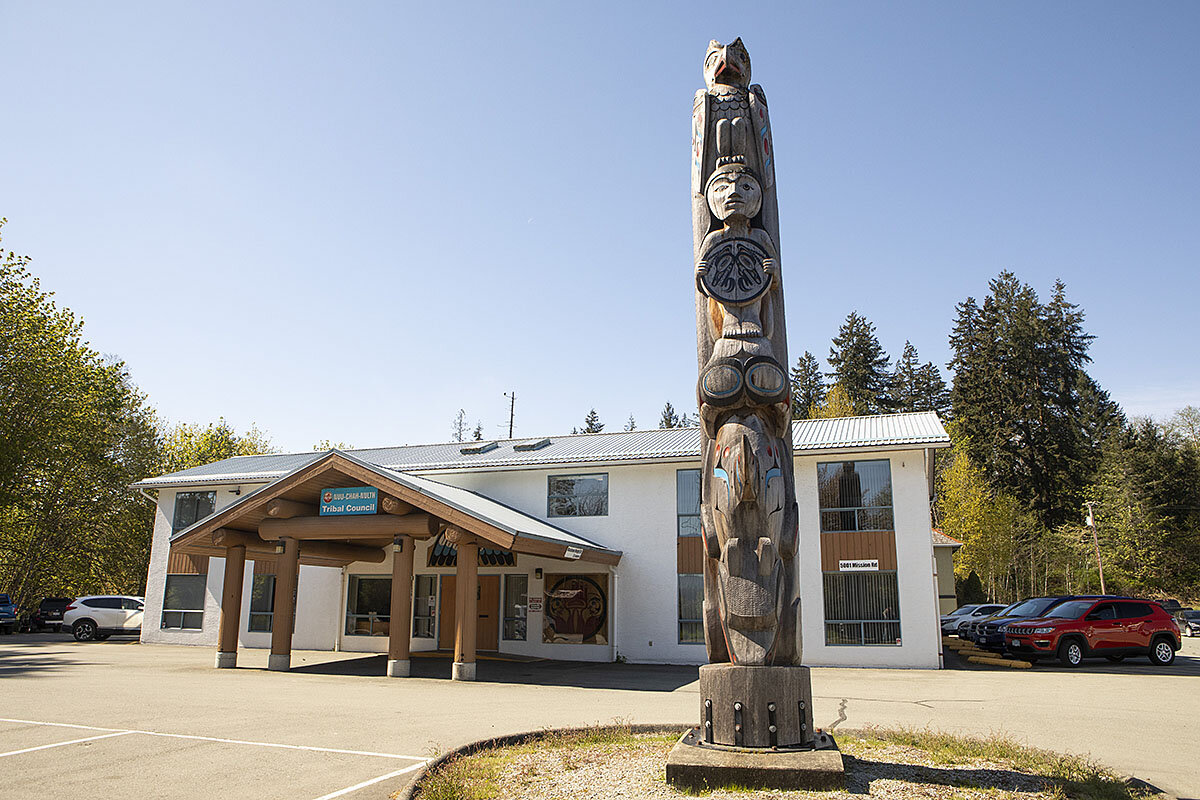
The Truth and Reconciliation Commission of Canada has sought to address Canada’s dark history, releasing 94 calls to action in 2015 that have led to a flurry of government policy. In May, the Liberal government proposed changes to the citizenship oath to specifically recognize indigenous rights; in June, findings from the National Inquiry Into Murdered and Missing Indigenous Women and Girls in Canada was released.
Indigenous issues receive far more attention here than in the United States, even though the communities face similar repercussions of colonial violence. Reconciliation efforts are covered widely in the media. They are talked about in schools, at community functions, and at water coolers. The government keeps them at the top of the agenda.
“Reconciliation is imperative for Canada – for its progress as a country and as an example to the world,” said Canada’s minister of Crown-Indigenous Relations, Carolyn Bennett, as a guest at a Canadian Club of Toronto luncheon this spring.
When asked what keeps her up at night, she said she worried about the progress rolling backward. “We have momentum now,” she said.
‘A lot of baggage to the word’
But such words can ring hollow in places like Port Alberni, an old logging and mill town, ringed by snowcapped mountains in the traditional territories of the Hupacasath and Tseshaht First Nations – and never more so to local leadership as the scandal against Ms. Wilson-Raybould came to a head this year. Ms. Wilson-Raybould came under pressure from the prime minister’s office to help a Quebec engineering firm avoid prosecution on corruption charges and refused. That clash is widely believed to be the reason she was reshuffled this winter to the Veterans Affairs Ministry, and finally ejected from the Liberal Party altogether.
When Ms. Wilson-Raybould was named by Mr. Trudeau as attorney general and justice minister in 2015, it was a signal for many indigenous communities here that the government was truly ready to reconcile. Not all First Nations communities agreed with her decision to join the cabinet in the first place – essentially seeing it as her participation in the colonial system – but they felt hopeful about shifting power dynamics nonetheless.
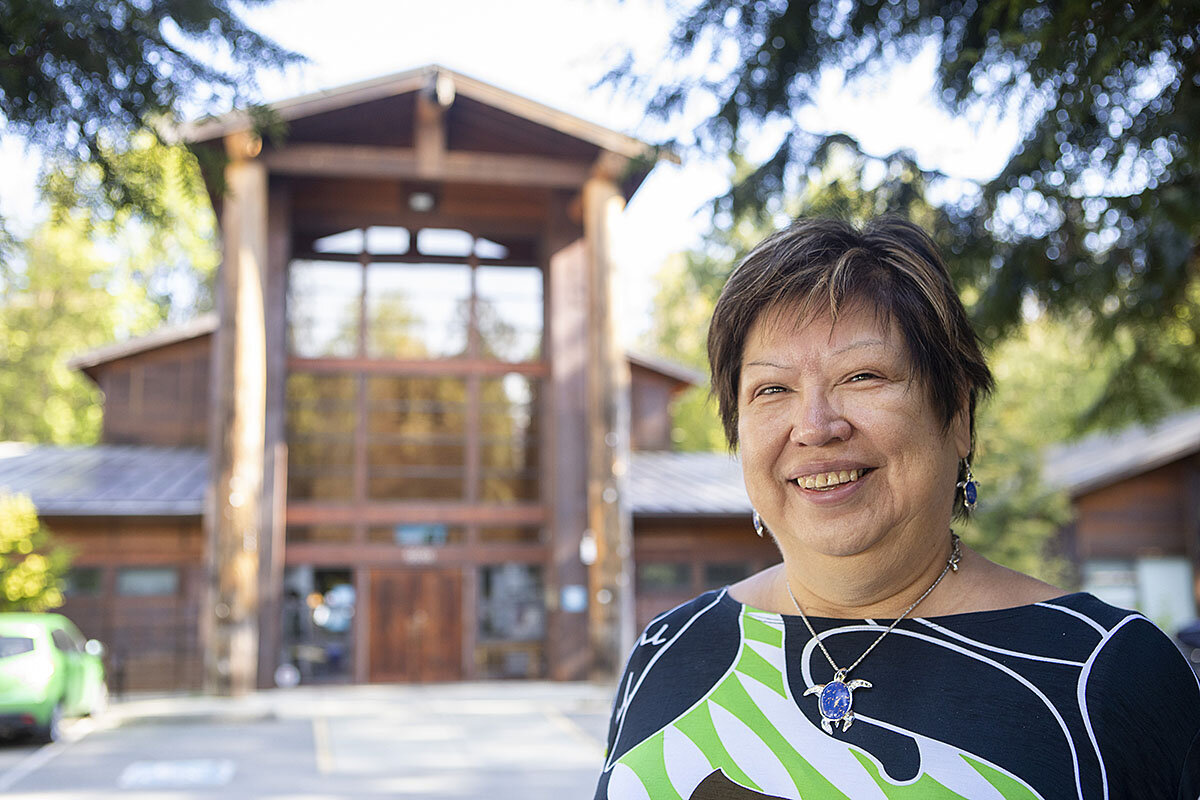
Judith Sayers, who lives in Port Alberni and is president of the Nuu-chah-nulth Tribal Council on Vancouver Island, has worked with Ms. Wilson-Raybould throughout her political career, like most indigenous leaders in this province.
“It’s just that public humiliation. We all felt that,” she says. “And so you start looking at what it is that they’re doing with reconciliation, and there is no reflection on what First Nations want and need.”
On a recent day, on one of the main reservations of the Hupacasath First Nation where Dr. Sayers was a former chief, she says their real battle is reclaiming their land base – today they own 232 hectares (0.9 sq. miles), or 0.001% of the original mass. That’s bigger than many reserves, and theirs is better off. Some reservations still don’t have clean drinking water. Many homes are overcrowded. Poverty rates for indigenous people in Canada stand at 25%.
That’s part of the reason why when preparing for a series of meetings about indigenous priorities moving forward, Dr. Sayers wasn’t sure she wanted to use the term “reconciliation.” “There’s a lot of baggage to the word,” she says, “because everybody uses it and nobody really knows what it means. And if what the governments are doing is reconciliation, then maybe we don’t want it.”
Mr. King of the Yellowhead Institute says that indigenous people have worked hard to expose the myths of Canada. “I think people in the U.S., in Western Europe, really around world, think of Canada as this multicultural utopia. And for indigenous people, that’s not the case,” he says.
Reconciliation in the community
And yet, reconciliation is still playing out at the local level, perhaps more than ever. One of the most notorious residential schools sat just a few miles from the harbor of Port Alberni. But resident Chris Alemany didn’t know it. In fact, he didn’t even learn about the system until after he graduated from high school.
He was serving as an elected city councilor when reconciliation took off at the national level, and he started thinking about what it means in his hometown. In particular he thought about a street named after former lawmaker Alan Webster Neill, who both oversaw residential schools on behalf of the government (in a stint as an “Indian agent”) and was vehemently opposed to Japanese immigration to Canada.
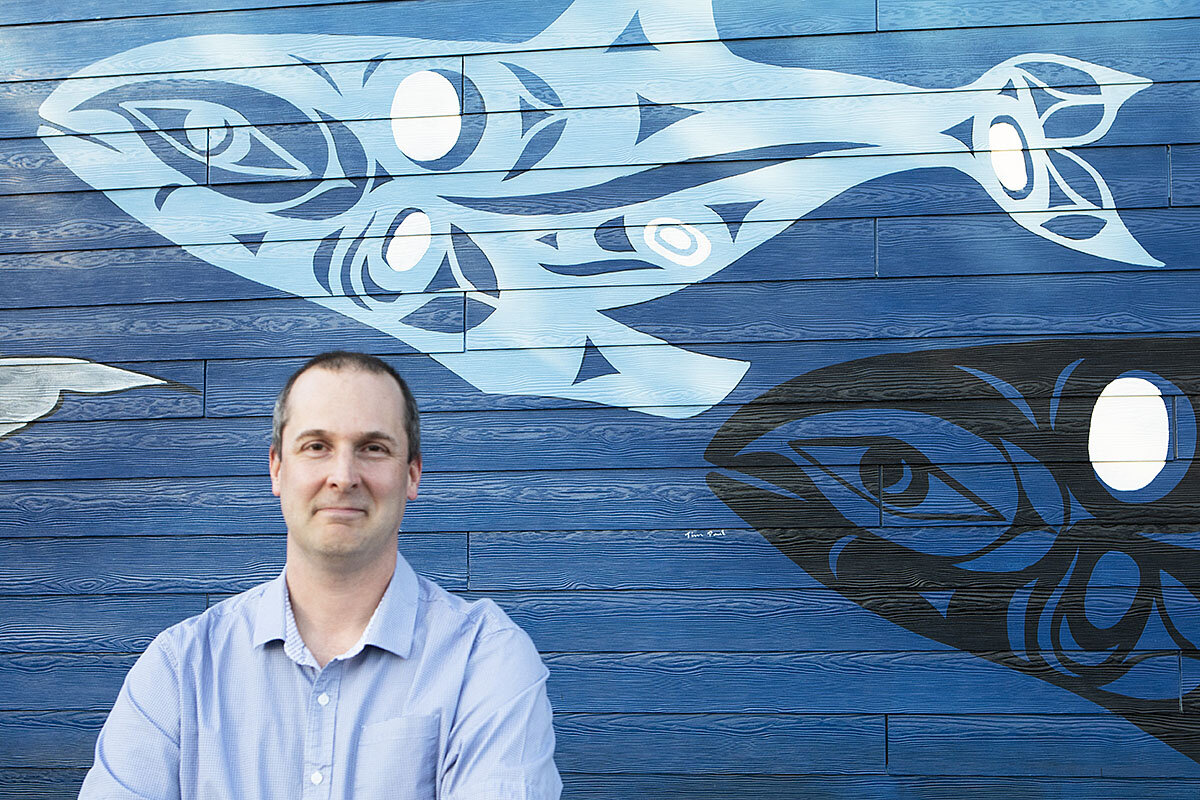
Mr. Alemany presented a motion to have it renamed. The issue of historical memory got heated as it always does. One citizen, in a council meeting at the time, said he’d been called a white supremacist because he believes renaming isn’t worth the cost. He added that reconciliation, in some cases, does more harm than good. “I don’t feel that I was personally responsible and have to reconcile for things that I have nothing to do with,” he said at a recorded meeting.
For Mr. Alemany, changing street signs may seem trivial to some, but he saw it as urgent. “I think climate change and reconciliation are the two most important issues facing Canada if not most of the Western world,” he says, “because it’s the same kind of encroachment of Western civilization.”
The council voted against renaming Neill Street. But it generated a lot of soul-searching. Hundreds of indigenous and nonindigenous members supported a Walk for Reconciliation in 2017, which culminated in the city forming its own committee on reconciliation.
Their work has opened space for education, one of the key aims of national reconciliation, says Wally Samuel, a First Nations committee member. He says the relationship between indigenous and nonindigenous people in Port Alberni has improved markedly since he was sent to residential school here, but stereotypes and misunderstanding about what indigenous people have endured still exists.
“There are still a lot of poor First Nations with addictions. They are the ones you see on the street, and those are the ones people pick on,” he says. “A lot of them have been through something.”
Seeing oneself
For many First Nations residents here, moving forward is about reclamation of culture. At the Haahuupayak School, an indigenous-run primary school, students finish a drumming and dancing class before they scurry out to recess. Their teacher, Lena Ross, explains the value in their daily Nuu-chah-nulth lessons. “I think it gives us a firm foundation of who we are. It instills pride, a pride that nobody can dismantle.”

Ms. Ross says she grew up feeling empty, in the midst of a spiritual crisis of silence that she couldn’t grasp, until she met two older women who guided her. “I couldn’t see myself reflected anywhere,” she says. “They put everything back into me until I felt whole again as a person. And that’s why I’m here today, because I want everybody to feel the wholeness.”
For Ms. Ross, this is the work of reconciliation, which cannot be undone by any government action, policy, or election. She does not see the political fate of Ms. Wilson-Raybould as a setback but as progress – a First Nations woman in the government who stood up for what she thought was right. “I think Jody was a good example,” she says. “I look at her as a very strong First Nations woman who embraced the teachings and is not ready to tolerate the mistreatment of First Nations people.”
“I think she’s regained that spirit that was lost through residential school.”

Maine networks support young farmers, before they drop out
High suicide rates signal how farming’s hardship is mental and emotional, not just physical and financial. We found a network in Maine that helps to lighten those burdens. Part 2 of 3.
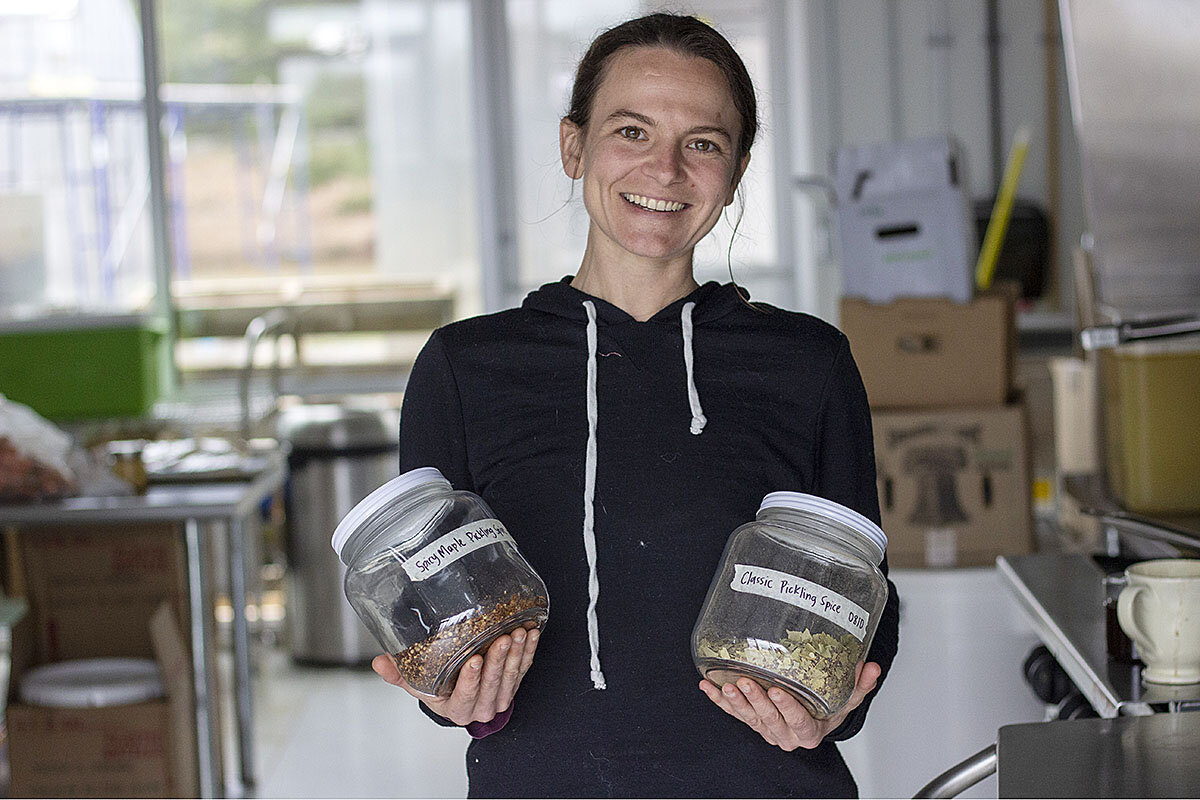
- Quick Read
- Deep Read ( 6 Min. )
Since 2013, Jenn Legnini has been trying to capture the fruits of Maine’s short growing season. She’s been turning produce into value-added goods including pickles and fruit spreads. But six years in, the going is still tough.
Many people fall in love with the idea of farming, but few have the grit and endurance to bear the hard physical labor, the isolation, and the financial hardship when things don’t go as planned. Farmers and farmworkers, in fact, have the fourth-highest suicide rate among U.S. occupations.
“When young farmers feel unsupported ... there’s a larger chance they’re going to move somewhere else or quit farming,” says Caitlin Arnold of the National Young Farmers Coalition.
Maine, with the nation’s second-highest percentage of beginning farmers, is trying a novel approach. A new two-year program called the Maine Farm Resilience Program is working to connect still-green farmers with mentors, educational resources, and each other. Ms. Legnini is part of the inaugural class. “If I want to grow, I need people to help me carve that path,” she says.
Maine networks support young farmers, before they drop out
Jenn Legnini is standing in her processing plant in Brunswick, Maine. She casts a thoughtful eye over rows of neatly packed glass jars lining the concrete walls. Each is wrapped in textured white paper bearing the simple Turtle Rock Farm logo. There are relishes and fruit spreads. Pickles are a customer favorite, and so are the organic whole-peeled tomatoes.
Since 2013, Ms. Legnini has been hard at work trying to capture the fruits of Maine’s short growing season. She sighs, wishing she were further along in establishing her brand.
“How am I still building this? How am I still working to establish this six years in?” she asks with a wry smile.
Ms. Legnini works with other farmers in Maine to turn their produce into value-added goods. What began with a few pints of strawberries in her own kitchen has morphed into a full-fledged operation. Her team processes 8,000 pounds of tomatoes every year, 9,000 pounds of blueberries, and 14,000 pounds of cucumbers. Those numbers should grow, as Ms. Legnini recently bought a farm.
Farming is a second career for Ms. Legnini, who has a culinary degree and spent more than a decade working in fine dining. She was still moonlighting as a cook when she started Turtle Rock. But she’s reached a critical juncture: Six years is the point at which many farmers throw in the trowel.
Many people fall in love with the idea of farming, but few have the grit and endurance to bear the hard physical labor, the isolation of rural communities, and the financial hardship when things don’t go as planned. Ms. Legnini, for one, is feeling pulled in many directions. Not only is she still trying to grow her fledgling business, but she also recently moved in with her long-term partner and is fixing up the old farmhouse.
And when young farmers start to think about growing their own families, things can get even more complicated, says Caitlin Arnold, who works for the National Young Farmers Coalition (NYFC). This harsh economic and personal reality is partly why farmers and farmworkers have the fourth-highest suicide rate among all occupations in the United States. Addressing the emotional needs of farmers is just as important as addressing their financial needs, she says.
“When young farmers feel unsupported, they don’t feel like they have access to the resources they need, and I think there’s a larger chance they’re going to move somewhere else or quit farming,” says Ms. Arnold.
Houston Bruck, who oversees the loan-making programs at the U.S. Department of Agriculture, says today’s farmers are more risk-averse, more willing to quit if financial prospects turn dark. But the industry needs people like Ms. Legnini, who is in her 30s, to succeed. More than a third of farmers are 65 or older, and the average age of all producers has risen to 57.5, according to the latest USDA Agriculture Census. Without a new crop of farmers, industry consolidation could take a toll.
“Fewer farmers typically result in less competition, which can result in less choices, less quality, and higher prices,” says Mr. Bruck. “It takes all types of producers to have a robust agricultural system that can feed not only America, but the world really. That’s what’s at stake here.”
Farmers supporting farmers
Maine has the nation’s second-highest percentage of beginning farmers, with more than a third of its producers having less than 10 years of experience. As a result, the state has developed a plethora of programs designed to keep beginning farmers healthy and in business. Many of them are run by the Maine Organic Farmers and Gardeners Association (MOFGA). A two-year program called the Maine Farm Resilience Program, launched this spring, is working to connect still-green farmers with mentors, educational resources, and each other.
Ms. Legnini is part of the inaugural class. She’s eager to find a mentor to help her identify potential partners.
“I am having some success making it work on a small scale, and if I want to grow, I need people to help me carve that path,” she says.
Anna Mueller, who runs the Maine program, thinks that creating those opportunities for farmers to build each other up is key to the program’s success.
“It’s one thing to go to the farmers market and have people appreciate the food and buy it, but it also feels really great to just meet with the other farmers and see, you know, ‘How is your spinach doing? Mine is having this issue,’” Ms. Mueller says. “It’s talking to people who are doing the same thing and are in the fields all day working.”
Some of Maine’s farmer networks are just a click away. For farmers in the Journeyperson Program, they belong to a group email list where members can swap tools or go in together on bulk orders to get a discount.
The forum is also a place where farmers can share hopes and fears. Last summer a Maine farmer posted a link to a story in The Guardian about farmer suicides in the U.S., and the post generated a flood of people offering emotional support.
“You just feel so isolated sometimes, but to turn around and have these big, beautiful resources of farmers and this common link – it’s an amazing support,” says BrennaMae Thomas-Googins, who co-owns a vegetable and livestock farm an hour north of Portland, Maine. She has participated in several MOFGA programs.
“We have to be able to talk”
Having access to a network of farmers has been invaluable, she says. When her well ran dry from June to November in 2015, she was able to rely on her community for water. As a mother of two, she’s been able to find a depth of support and understanding with other mother-farmers. Whenever the intensity of parenting while farming feels particularly acute, she goes over to help a friend run her maple syrup operation.
“We have to be able to talk about how stressful it is that we don’t sleep at night,” says Ms. Thomas-Googins. “This is really crazy for me to leave my farm to do this thing, but every three days I have four hours with another mother who’s doing agriculture, and I need this emotional support.”
And she has recently started hosting apprentices. “There’s like a family vibe to what the Maine Organic Farmers and Gardeners Association creates,” she says.
Ms. Mueller says the people within MOFGA share a binding agent that is key to holding it all together. “We want a better world; we want healthy, good food for ourselves and our children. It’s such a big community of [people] that come together around this idea of overall sustainable living, caring about the future and our world, and healthy good food,” she says.
Ms. Legnini hopes Turtle Rock Farm, built on sustainable practices, will also be long-lasting. She recently won a $250,000 grant from the USDA to continue building up her business by working with more farmers and crafting a plan for the next several decades. She wants to ensure she has an endgame plan in place when she retires in 30 years.
“I don’t want this place to close when I close. We are reigniting that path of [a] sustainable local food system,” she says.
But she has a close eye on the present, too, as she and her partner fix up their house and settle in.
“I think it’s important for me to live my life, too. You need that balance,” she says.
The Farm Aid Hotline can be reached at 800-327-6243 and the National Suicide Hotline at 800-273-8255.
This series focuses on solutions to challenges faced by beginning farmers. The other installments include Part 1: What if aspiring farmers have no money for a farm? And Part 3 (up next): Entrepreneurial approaches breathe new life into the family farm.

Difference-maker
How a Chicago photographer uses art to bridge racial divides
Sometimes if you’ve crossed a particular barrier, you can show others how to do the same thing – and in the process, build connections that can spur progress.
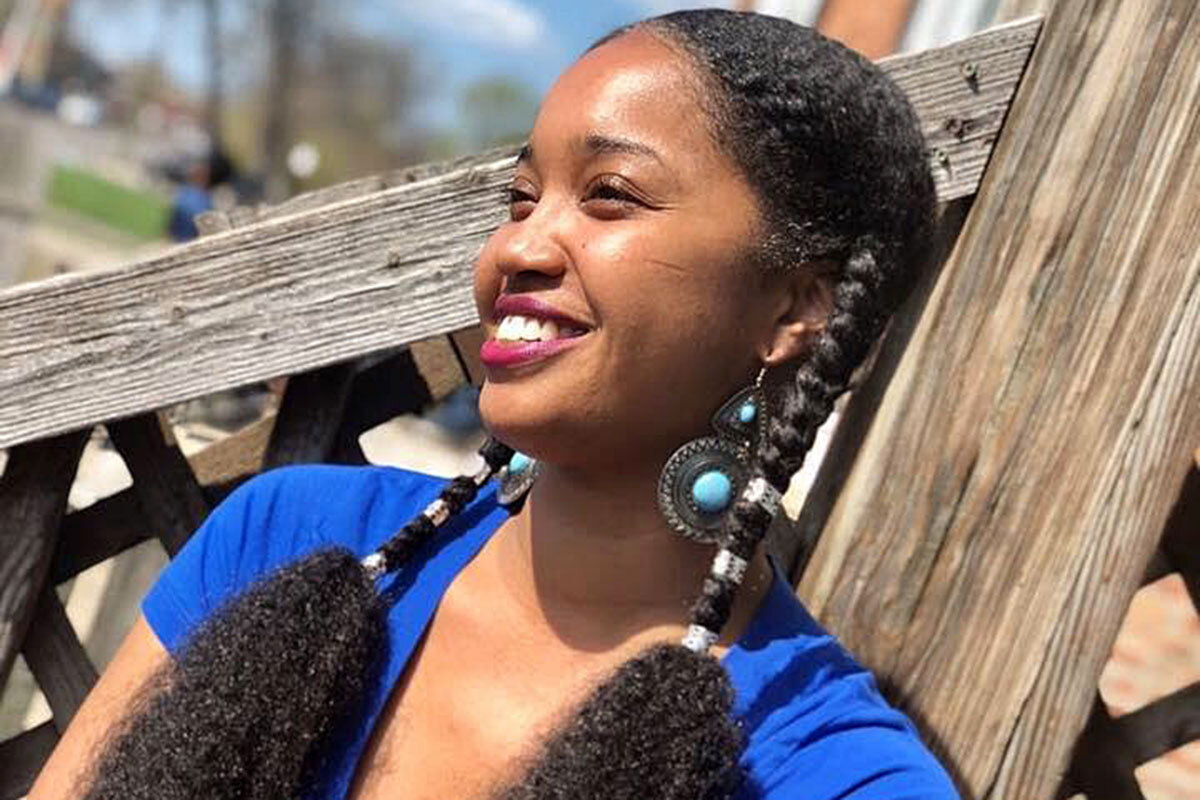
- Quick Read
- Deep Read ( 6 Min. )
-
By Richard Mertens Correspondent
Tonika Johnson had personally experienced the social and economic chasm that exists between Chicago’s poorer, mostly African American South Side and the wealthier and largely white North Side. As a teen, she traveled from south to north to attend a selective high school.
Now she’s trying to help her long-divided city reach across those divisions. Photographic art is her vehicle. In a project she calls Folded Map, Ms. Johnson aims to document the ongoing effects of segregation, and also to begin a conversation by introducing people who live at matching addresses at opposite ends of the city.
Those “map twins” learn from each other, and become part of Ms. Johnson’s photography. Publicized in part through a Loyola University art exhibit last summer, the project has caught the imagination of many Chicagoans.
“What I love about her art is that it’s really bringing it down to a human level,” says Maria Krysan, a University of Illinois sociologist who is helping to develop a school curriculum rooted in Folded Map. “People are meeting each other and telling stories of neighborhood experience.”
How a Chicago photographer uses art to bridge racial divides
When Tonika Johnson was in high school, her day began at 5:45 each morning at a bus stop at 63rd and South Loomis on Chicago’s South Side. Using bus, train, and another bus, she traveled far from her Englewood neighborhood, with its storefront churches, abandoned houses, and vacant lots, to a selective high school on the city’s North Side, a journey whose final leg took her down a tree-lined street graced with cafes and boutiques.
“I thought, wow, this street looks totally different from my neighborhood,” she says. “Why doesn’t my neighborhood have these things?”
The question has haunted her ever since. The racial and economic divide she crossed each day was an old scar across the city, separating the poorer, mostly African American South Side from the wealthier and largely white North Side. Dating to the earliest days of the Great Migration from the South, the divide endures, creating troubling new contrasts, as African American areas lose residents and schools while the North Side booms.
And so Ms. Johnson, long graduated from high school and now a professional photographer, is raising her old question in a new and more public way. In a project she calls Folded Map, she is confronting a divide that still fractures Chicago and many other American cities. It’s a multimedia effort not only to document the ongoing effects of segregation, but also to begin a conversation about them and, in a small way, to reach across the divisions.
“I wanted to help people understand the present-day impact of present-day segregation in Chicago,” she says.
It’s no small task. Chicago is one of the most segregated cities in the country, along with other Rust Belt cities, including Detroit, Cleveland, and Milwaukee. Segregation dates to the early 20th century, when Southern blacks began streaming north in search of a better life. In Chicago, real estate covenants restricted them to certain South Side neighborhoods. And though laws have changed, segregation and its effects endure in plain sight, perpetuated by economic inequality, racial discrimination, disinvestment, and other factors. A recent report by Chicago’s Metropolitan Planning Council suggests segregation’s toll includes higher rates of violence, lower educational achievement, and $4.4 billion in lost income.
Ms. Johnson launched the Folded Map project in 2017, when she began photographing buildings on opposite ends of the city, trying to capture the stark contrasts between north and south by looking for matching addresses on the long avenues that run the length of the city. Soon she was interviewing residents of these buildings about their perceptions of the city. She began introducing them to each other, creating what she called “map twins” and encouraging conversations and visits.
These efforts yielded four sets of map twins and a collection of photographs that were put on public display last summer in Chicago at Loyola University’s Museum of Art. Since then the project has taken on new life, with a play based on Folded Map, a series of workshops led by Ms. Johnson, and an effort to bring Folded Map into the schools as a way of engaging young people with the problem of segregation.
Ms. Johnson started Folded Map while on a journalism fellowship at the nonprofit City Bureau. She says she always had the project in mind “in different versions.” And, having returned to Englewood to live, she became involved in a community-led marketing campaign to counter views of it as a place of only poverty and violence.
“I want my work to be a source of encouragement and empowerment,” she said at the time as part of that campaign, called Englewood Rising. “I want to inspire people to do something, to make changes for the better.”
One day, as she was photographing houses on the North Side, a woman came out to see what she was doing. Ms. Johnson ended up inviting the woman, Jennifer Chan, to visit Englewood. She also introduced Ms. Chan and her husband, Wade Wilson, to an Englewood woman, Nanette Tucker.
They exchanged visits. Ms. Tucker went to the North Side, then led Ms. Chan and Mr. Wilson on a stroll around her Englewood neighborhood. They sat on her front porch and talked “about the things that mattered to us,” Ms. Tucker says.
She didn’t know what to expect from these meetings. But she was pleasantly surprised. She and her North Side counterparts found they had plenty in common – including a love of gardening. They also shared a common concern for the inequities visible across the city.
“It was easy to talk to them,” she says. “I felt like I knew them. They felt like they knew me. We instantly clicked.”

Not every match has blossomed into friendship this way. But for North Siders, the project has opened doors to a part of the city that most of them rarely if ever step foot in and that many avoid. It’s also been a chance to reflect on the geographic differences.
“You certainly have a sense of guilt about having so much when other people are struggling,” says Mr. Wilson. “You hope you’re being sensitive to it.”
For South Siders, it’s a chance to show sympathetic outsiders the economic disparities they live with every day.
“On the North Side you can walk out of your house and go to many sidewalk cafes and many grocery stores,” says Ms. Tucker. “On the South Side you really can’t do that. For a long time it was a food desert.”
Perhaps more important, it’s allowed them to show in a personal way that there’s more to Englewood than the violence that people hear about on TV. “I think we’re a great example of a black family that wants good things for their community,” says Tina Hammond, another Englewood resident who is part of Folded Map. “We just want people to see us as human beings.”
Ms. Johnson isn’t just a photographer. She’s also the mother of two children – one in college, the other entering high school. Her dining room is decorated with a display of African masks and framed photos she’s taken in the neighborhood.
“She’s creative, innovative, bold,” says Asiaha Butler, a friend and the executive director of the Resident Association of Greater Englewood. Ms. Butler says Folded Map is “a really great platform to have conversations around social justice.”
The project has caught the imagination of many other Chicagoans, including Maria Krysan, a professor of sociology at the University of Illinois at Chicago and an expert on what she calls the “cycle of segregation.” Ms. Krysan’s research has focused on how segregation is perpetuated by “social networks, lived experiences – and the media.” The Folded Map project seemed to speak to these very ideas, and today Ms. Krysan is helping Ms. Johnson develop her school curriculum on segregation.
“What I love about her art is that it’s really bringing it down to a human level,” Ms. Krysan says. “People are meeting each other and telling stories of neighborhood experience. ... I was really moved by it.”
Meanwhile, Ms. Johnson is working to enlarge the map. On a recent weekend she was out in a black neighborhood on Chicago’s West Side trying to recruit new participants – and hoping to build bridges to another part of a divided city.
“This examination of segregation in this specific way is a reflection of what African Americans in Chicago have known all along,” she says. “They operate in these two worlds. For others, it’s a new thing. It’s eye-opening.”
Other headline stories we’re watching
(Get live updates throughout the day.)The Monitor's View
What keeps us from expelling fellow citizens
- Quick Read
- Deep Read ( 2 Min. )
-
By the Monitor's Editorial Board
In democracy, the interests of particular groups are often stereotyped, even dismissed by leaders. What has wisely restrained dart-throwing identity politics is a shared desire to sustain democracy itself. Those in a minority should not feel so excluded that they leave or destroy the system. Nor should a minority be asked to actually leave the United States, as President Donald Trump told four women in Congress to do in a tweet on Sunday.
Rough politics is often smoothed over by accommodating a minority’s interests, or at least by giving minorities a platform in the public square to voice concerns. Someday the roles of a majority and minority might be reversed. Yet the tools and values of democratic engagement must endure.
Politics can divide people but should never eject entire groups of citizens. Elections do produce winners. But winners cannot take all and then send others walking.
What keeps us from expelling fellow citizens

In American democracy, the interests of particular groups are often stereotyped, even dismissed by leaders. Some groups might be called “deplorables” or described as people who “cling to guns or religion,” as candidates have done. Last week, progressive and centrist Democrats descended into racist labeling of each other. Rep. Alexandria Ocasio-Cortez, for example, accused House Speaker Nancy Pelosi of “singling out” newly elected women of color.
What has wisely restrained such dart-throwing identity politics is a shared desire to sustain democracy itself. That takes humility about one’s own rightness as well as respect of minority rights. Those in a minority should not feel so excluded that they leave or destroy the system. Nor should a minority be asked to actually leave the United States, as President Donald Trump told four women in Congress to do in a tweet on Sunday.
Reaction to Mr. Trump’s banishment tweet was strong, notably among Democrats. But Sen. Lindsey Graham, a Republican from South Carolina and a Trump supporter, asked the president on Fox News to see the four congresswomen as any politician should: “They are American citizens. They won an election. Take on their policies. The bottom line here is this is a diverse country.”
Rough politics is often smoothed over by accommodating a minority’s interests, or at least by giving minorities a platform in the public square to voice concerns. Someday the roles of a majority and minority might be reversed. Yet the tools and values of democratic engagement must endure.
As James Madison wrote in the Federalist Papers, the public good requires measures not be decided “by the superior force of an ... overbearing majority.” He argued against “some common impulse of passion, or of interest, adverse to the rights of other citizens.” That is not always easy under a majority-rule system. It requires patience and the need to place a burden on the majority for strong justification of any measure.
The political passion to exclude others, as Abraham Lincoln stated, “must not break our bonds of affection.” Those affections, he added, arise from “chords of memory” as one nation and “the better angels of our nature.”
In U.S. history, “better angels” have often helped snap back American politics into its role as unifying a disparate people. Politics can divide people but should never eject entire groups of citizens. Elections do produce winners. But winners cannot take all and then send others walking.

A Christian Science Perspective
Each weekday, the Monitor includes one clearly labeled religious article offering spiritual insight on contemporary issues, including the news. The publication – in its various forms – is produced for anyone who cares about the progress of the human endeavor around the world and seeks news reported with compassion, intelligence, and an essentially constructive lens. For many, that caring has religious roots. For many, it does not. The Monitor has always embraced both audiences. The Monitor is owned by a church – The First Church of Christ, Scientist, in Boston – whose founder was concerned with both the state of the world and the quality of available news.
Mental health that’s permanent and secure
- Quick Read
- Read or Listen ( 4 Min. )
-
By Kim Hedge
Many are yearning for lasting relief from depression, anxiety, and stress. Here’s a story of hope, written by a woman who found complete and permanent freedom from mental darkness and self-destructive behaviors as she learned about God as divine Mind.
Mental health that’s permanent and secure
Mental health is a widely discussed issue these days. Yet effective solutions remain elusive. The seeming prevalence of depression, anxiety, and stress indicates that many are still struggling to find permanent relief.
I’ve been there, struggling to find reprieve from the roller coaster of highs and lows and the anxious and sometimes suicidal thoughts that would paralyze me with fear.
And yet, I learned that there is a power greater than those dark thoughts. This power is God, who shined a light so bright it permanently dispelled my mental darkness.
This light came into my experience when I was reminded about the power of God, divine Love, who created us. I came to understand that reflecting God’s goodness is inherent to my nature because I was created in the image and likeness of the Divine – spiritual, whole, complete, and entirely good.
In her seminal book, “Science and Health with Key to the Scriptures,” Mary Baker Eddy, the discoverer of Christian Science, defines God with synonyms that are based in the Bible. One of these synonyms is Mind. Science and Health states: “To begin rightly is to end rightly. Every concept which seems to begin with the brain begins falsely. Divine Mind is the only cause or Principle of existence” (p. 262). There is nothing imbalanced or depressed about God – divine Love, Life, Mind – so there can be nothing in God’s offspring that is out of balance or depressed.
While I now know this to be true, this realization didn’t come without a struggle. I often had trouble sleeping, unable to turn off the endless cycle of rumination; and sometimes I feared sleep because I had terrifying nightmares. At other times, I would awake overwhelmed by panic and fear. Some days it would seem that everything around me was bright, while inside I felt a deep sense of hopelessness and anguish. Eventually it got to the point where I engaged in self-destructive behaviors.
I knew I needed to talk to someone, so I visited a psychologist, who suggested that I see a psychiatrist. I was officially diagnosed with depression and anxiety, and it appeared that I would be on medication for the rest of my life in order to feel “normal.” However, I never felt normal on the medication either, and there were a number of side effects. I definitely wasn’t joyful or free.
I wasn’t sure if I believed in God anymore. But I reached out to my sister, an earnest student of Christian Science, who graciously answered my many questions with the greatest of patience. I became more certain that healing could be found in Christian Science.
I began studying the Bible and Science and Health. A friend who is a Christian Science practitioner, someone engaged full time in the ministry of Christian Science healing, guided me to passages that spoke about God as Mind. During this time I came across this statement in Science and Health: “Remember, brain is not mind” (p. 372). This helped me see more clearly my true identity as God’s, perfect Mind’s, reflection. I became increasingly convinced that my brain had nothing to do with my true identity, because divine Mind is the only source of my being, and therefore the only source of true thoughts. Because God, Mind, is all good, dark or frightening thoughts were not my thoughts.
This questioning and seeking went on for a while, and then came a day when I knew with utter certainty that I had been healed. I stopped taking the medications. The psychiatrist had warned that if I stopped taking the medication, it should be done slowly for fear of worse side effects. In spite of these predictions, I experienced no such side effects. I was free!
As I grew in my understanding of and reliance on God, I realized that I didn’t need to continue seeing the psychologist, as I could commune with God when I was in need of counsel or guidance. I also never returned to the psychiatrist and never felt the need to take any further medication, as the depression and anxiety had been completely dispelled. Some years later, it occurred to me that all of the negative thoughts and imaginings of terrible things that could happen had disappeared, and even some associated anger issues had simply melted away.
Mrs. Eddy writes: “Mind that is God is not in matter; and God’s presence gives spiritual light, wherein is no darkness” (“Miscellaneous Writings 1883-1896,” p. 113). How true this is! This healing occurred almost a decade ago, and the freedom and joy it has brought are almost indescribable.
Instead of simply managing depression, we can allow the light of divine Mind to outshine the darkness of depression and replace despairing and fearful thoughts with complete peace and exuberant joy.
Adapted from an article published in the July 1, 2019, issue of the Christian Science Sentinel.

A message of love
The birthday boy

A look ahead
Thanks for starting your week with us. Tomorrow, science writer Eva Botkin-Kowacki takes an in-depth look at how the moon landing, 50 years ago, inspired a nation and changed the world. Her report includes talking to two astronauts about what it was like to walk on the moon.



